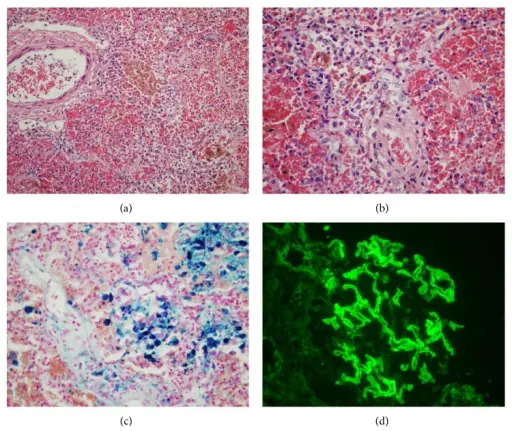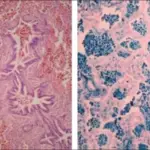Goodpasture syndrome is inflammation of the glomerulus with or without pieces of evidence of pulmonary hemorrhage in the presence of antibodies known as the anti-glomerular basement antibodies caused by the body producing antibodies to fight the lung tissues.
What is the Pathology of Goodpasture Syndrome?
The pathology of Goodpasture syndrome is:
-Etiology: The cause of Goodpasture syndrome is corrosion and disturbance of the normal morphology of the tissue mostly caused by exposure to hydrocarbons, cocaine inhalation, smoking and lymphocyte depletion therapy.
-Genes involved: Unknown.
-Pathogenesis: The sequence of events that lead to Goodpasture syndrome occurs when there is the binding of the antibodies on the alpha 3 collagen causing pulmonary hemorrhage and glomerulonephritis.
-Histology: The histology associated with Goodpasture shows crescentic glomerulonephritis which in turn changes to fibrotic glomerulosclerosis.
How does Goodpasture Syndrome Present?
Patients with Goodpasture syndrome typically is higher in young males and older female.it occurs in two age ranges 20-30 years and 60-80 years respectively. symptoms, features, and clinical findings associated with Goodpasture syndrome include dyspnea, fatigue, cough, hematuria, and hemoptysis.
How is Goodpasture Syndrome Diagnosed?
Goodpasture syndrome is diagnosed mostly through a biopsy of the kidneys since it gives accurate results. Another lab test done is the confirmation of the cytoplasmic antineutrophilic antibodies in the bloodstream.
How is Goodpasture Syndrome Treated?
Goodpasture syndrome is treated by the use of three guiding principles they involve; plasmapheresis which is the removal of the antibodies circulating in the system, use of immunosuppressive medication which stops the production of more antibodies, and getting rid of the provoking agents.
What is the Prognosis of Goodpasture Syndrome?
The prognosis of Goodpasture syndrome is good since those who are diagnosed with, they have a 5-year survival rate once they are adhering to the treatments.



